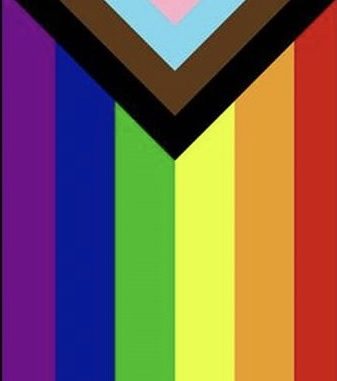
SUNY New Paltz, situated in a quirky and artistic town full of pride flags and political activism, seems to be a haven for minorities. Perhaps to an outsider looking in, it seems that self expression of all kinds is greatly accepted and encouraged.
However, to an insider, it has become clear that fitting in is not so black and white.
A new club affiliated with campus pride called In Living Color (ILC) is looking to launch this month and is exploring the “gray area” of intersectionality.
Founded by third-year linguistics major Javay Fraser, the club will seek to break down the wall that seems to stand between the white LGBTQIA+ community and queer and trans people of color (POC).
“The overall goal of In Living Color is to allow [queer POC and queer trans POC] students to have a space where they can feel included and have a sense of solidarity, but most importantly the goal is to create a space where these students feel as though they have the ability to be their true and authentic selves,” Fraser said.
Even on an accepting campus such as New Paltz, the idea of intersectionality is often overlooked. Several students claim that they feel underrepresented on campus.
Fraser “[feels] as though within the LGBTQIA+ community as a whole, there tends to be a lack of focus when it comes to media representation of POC.”
Fraser is not the only one with this sentiment. Two students, fourth-year sociology and Asian Studies major Lynn Nguyen and second-year psychology major Kathleen Mangan feel much the same.
“As a queer Vietnamese woman…I feel underrepresented,” Nguyen stated.
According to students like Nguyen, it is not just the media that underrepresents people of color in the LGBTQIA+ community.
“White LGBTQIA+ people really are the majority of the New Paltz campus and its hard for me to find queer friends who are also Asian. So essentially, it’s hard for me to connect with any of my friends in both realms,” Nguyen said.
The struggle to connect with two groups simultaneously is apparently a common phenomenon called “masquerading,” according to Fraser.
“Simply put, [queer POC and queer trans POC] often feel like we cannot be both POC and LGBTQIA+ at the same time within our communities,” Fraser said.
Many New Paltz students may have experienced this feeling upon going home for a recess. It may feel like a student behaves one way at university and another way at home. But for queer people of color and queer trans people of color, this experience is one they cannot escape.
“I’ve experienced this phenomenon myself when I go to different spaces on campus and interact with different people,” Fraser reflected. “When I go to a space which is related to LGBTQIA+, I tend to feel as though the only part of my experience I can talk about is just being LGBTQIA+. In black spaces, I can only talk about being Black or being Caribbean.”
Simply put, the ideology behind ILC is that being a member of the LGBTQIA+ community is not just a white experience even though it is often represented that way.
“Within many different communities of color, people have a tendency to assume that identifying with the LGBTQIA+ is something which only white people are allowed to do and to express,” Fraser said.
Mangan has also been disillusioned by a lack of inclusion at the university.
“I don’t feel as included as I expected to be at New Paltz,” Mangan stated. “While I do feel that I have a voice within the [queer people of color] community, I have often felt ‘othered’ while at school, whether it be in the bathroom or in daily interactions.”
According to Mangan, “when you fail to recognize the difference in experiences, you fail to recognize the difference in severity in which certain groups experience adversity.” For this reason she feels that ILC will be a “necessary organization.”
Fraser, who has seen and heard of a few other pride affiliated clubs, knows that ILC will certainly address LGBTQIA+ related issues from a lens of being a POC.
“The focus of In Living Color is not just to have a space where people can talk about their experiences of being LGBTQIA+, but to have a space where people can talk specifically about the experience of being [a person of color] and LGBTQIA+,” Fraser said. “ILC is going to be all about focusing on the idea of intersectionality.”
To learn more about In Living Color, you can follow the Instagram account @inlivingcolornp. To really find out more, Fraser says that they’re “not too hard to find. After all, there’s only one Javay on this campus.”
